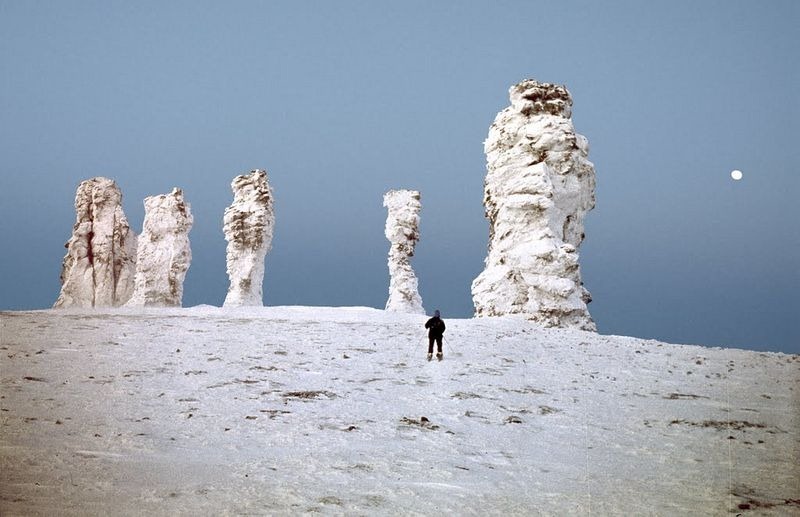The Manpupuner rock formations are a set of 7 gigantic stone pillars located on a flat plateau, west of the Ural mountains in the Troitsko-Pechorsky District of the Komi Republic. About 200 million years ago this area was a high mountain. Natural weathering by rain, snow, wind, cold and heat gradually destroyed the mountains, especially the weaker rock. The relatively hard sericite-quartzite schist, which the stone pillars are composed of, survived and now towers over the surrounding plain.
One of these pillars stand somewhat apart from the others, and with its narrow bottom and broad mid-section resemble a huge bottle, turned upside down. Six others are lined up at the edge of a cliff. People have seen all sorts of shapes in these pillars — the figure of a man, or the head of a horse or a sheep. Each of these monolith is between 30 to 42 meters high.
The pillars are also called the "Seven Giants" or "Seven Strong Men". According to a local legend, the stone pillars were once an entourage of Samoyeds giants walking through the mountains to Siberia in order to destroy the Mansi people. However, the men were confronted by a shaman with the white face, called Yallingner, who turned all the warriors into stones. Yallingner himself was turned into a stone, and since then, the seven formations have been standing in the area, with one facing the other six.
Deemed one of the Seven Wonders of Russia, the Manpupuner rock formations are a very popular attraction in Russia, though not well known internationally and relatively unspoiled by tourism, thanks to their remote location.


Sources: Wikipedia / Weather.com / Russian Wikipedia
This article has been revised and republished from an earlier article that appeared on Amusing Planet on May 21, 2010




















Comments
Post a Comment